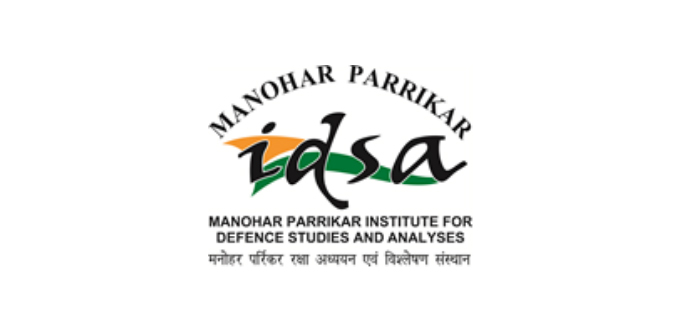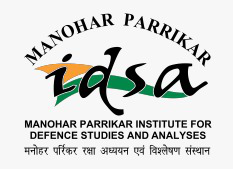
- This event has passed.
Monday Morning Meeting on recently published book “Mahabharata’s Strategic Insights: Navigating the Dharmic Compass”

On 11 August 2025, at the Monday Morning Meeting Col. Vivek Chadha (Retd.), Senior Fellow, Military Affairs Centre, Manohar Parrikar Institute of Defence Studies and Analysis spoke on his recently published book Mahabharata’s Strategic Insights: Navigating the Dharmic Compass, (Pentagon Press LLP, 2025). Dr Ashok Behuria, Senior Fellow, South Asia Centre, MP-IDSA moderated the session. Dr. Saurab Mishra, Research Fellow, Africa, Latin America, Caribbean, & UN (ALACUN) Centre, MP-IDSA was the discussant.
Detailed Report
In his opening remarks, Dr. Ashok Behuria described the Mahabharata as a dynamic text that evolved between 500 BCE and 400 CE, integrating diverse literary and cultural influences. Initially composed as Jaya (8,800 verses), it expanded to Bharata (24,000 verses) and ultimately became the Mahabharata, containing about 100,000 verses across 18 books and 1,356 chapters. He noted that compilers likely borrowed from multiple contemporary texts, embedding sociocultural elements to reflect the ethos of different periods.
Dr. Behuria highlighted that among its vast contents, the Bhagavad Gita emerged as the most influential section. Krishna’s teachings emphasise Dharma as context-specific rather than absolute, adaptable to circumstances. He concluded his opening remarks stating that Mahabharata’s philosophical relativism—where the same principle may be upheld in one context and rejected in another—offers layered ethical insights, sustaining its relevance.
Col. Vivek Chadha (Retd.) began his talk on his book, Mahabharata Strategic Insights: Navigating the Dharmic Compass, by highlighting how the epic’s multidimensional character— encompassing religious, spiritual, philosophical, and strategic aspects—offer guidance for leadership and statecraft. He categorically stated that his work focused on principles rather than fixed solutions.
The Mahabharata, according to Col. Chadha, is a tool to guide future decision-making through its deep insights. It aligns with a renewed institutional and governmental interest in indigenous strategic thought. However, he highlighted that MP-IDSA has conducted similar research for over 15 years, with the Mahabharata offering a unique convergence of spirituality, philosophy, and strategic affairs.
Col. Chadha highlighted that his primary source of the text is the English translation of the Critical Edition by Bibek Debroy (2010–2015) that is based on the Bhandarkar Oriental Research Institute’s Sanskrit edition (1919–1966). He stated that the study deliberately avoided multiple competing versions and focused on a single edition. The research focuses on the following core themes:
- Dharma as a Strategic Foundation – Principles remain constant, but their application is situational and subject to personal interpretation.
- Krishna’s Strategic Decision-making – Case studies reveal unmatched clarity and adaptability in strategic choices.
- Approach to War – Derives a framework for assessing war, ways of war avoidance and its constituents for achieving victory. The book also presents a comparative analysis with the Arthashastra and Nitishastra demonstrating continuity in Indian strategic thought.
He explained that the Mahabharata reflects a five-stage decision cycle—threat identification, evaluation of options, choice, action, and review—which mirrors modern processes but derives its strength from the quality of evaluation and adherence to guiding principles. The talk also contrasted finite objectives with the Bhagavad Gita-inspired infinite approach, which advocates pursuing long-term purposes with detached perseverance—particularly relevant in counter-terrorism and protracted conflicts.
Col. Chadha outlined a strategic framework derived from the Mahabharata:
- Objective: Protection and prosperity.
- Preference: Avoid war where possible; if unavoidable, prepare fully and aim to win.
- Alignment: Ancient strategic logic remains consistent with modern frameworks.
This framework is further explained through an Ends–Means–Ways correlation:
- Ends: Yogakshema (security and welfare).
- Means: The seven resources available to the state (saptanga).
- Ways: Execution during war and peace to ensure the effective application of resources towards objectives.
On the application of force, Col. Chadha described it as a spectrum—from deterrence to decisive action—requiring careful calibration to context, as both excess and insufficiency can undermine objectives.
Key takeaways from his analysis include:
- Strategic thought is timeless; application must adapt to circumstances.
- Dharma serves as a compass for personal and professional conduct.
- The infinite approach fosters resilience and vision.
- Prosperity and protection are complementary, not competing, goals.
- War avoidance is ideal; preparedness is essential.
- Deterrence depends on demonstrable capability.
- Ancient strategic logic parallels modern practice.
Future research avenues identified by Col. Chadha include tracing links between ancient, medieval, and modern Indian strategic thought; assessing continuity in strategic culture beyond the Mahabharata; and exploring the relevance of Dharma Yuddha to modern laws of armed conflict and rules of engagement.
Dr. Saurabh Mishra described the book authored by Col. Chadha as a timely contribution to indigenous strategic thought, addressing a long-standing gap in linking the epic to modern decision-making. While previous works, such as Strategic Choices, Ethical Dilemmas: Stories from the Mahabharat by Aruna Narlikar, Amitabh Mattoo and Amrita Narlikar touched on negotiations or moral dilemmas, they remained introductory; this book offers a consolidated, detailed framework.
He highlighted the infinite approach as the core conceptual innovation—advocating holistic, long-term strategy over finite, short-term actions, contrasted with Western models through cases like Vietnam and Afghanistan. The book’s integration of Mahabharata narratives with contemporary issues, including counter-terrorism, was praised for clarity and relevance.
Emphasising dharma as a strategic compass aligning intent and endeavour, Dr. Mishra said the work provides a robust foundation for future research on the epic’s strategic dimensions and will serve as a bridge for subsequent scholarship.
Q/A Session
Ambassador Sujan R. Chinoy, Director General, MP-IDSA, asked about the practical relevance of the book to contemporary challenges and whether comparisons could be drawn with Oriental traditions like Confucianism and Taoism. Col. Chadha affirmed the continued relevance of the infinite approach—emphasising flexibility, self-preservation, and long-term vision. He noted similarities between ancient Chinese strategic thought and the Mahabharata, suggesting that a comparative study of Oriental and Western approaches under different circumstances would be valuable.
Dr. Arnab Dasgupta, Research Analyst, MP-IDSA, inquired whether the Mahabharata War led to a “dharmic world order” and if such principles could inform a modern global order. Col. Chadha explained that post-war, there was no lasting ideal state; social decline was evident. Instead of replicating the post-war order, the focus should be on applying principles from the text, such as those in the Bhagavad Gita, to governance and order today.
Dr. Adil Rasheed, Research Fellow, MP-IDSA asked about the influence of the Mahabharata and Gita on figures like Shivaji and Mahatma Gandhi, and whether anti-state groups claiming moral legitimacy could be seen as acting under dharma. Col. Chadha agreed on the value of studying the epic’s influence on later leaders but rejected the analogy between dharma and violent extremist groups, stating that genuine dharma is incompatible with terrorism.
Gp. Capt. (Dr.) R.K. Narang (Retd.), Senior Fellow, MP-IDSA, asked how these strategic insights could be made more accessible to policymakers. Col. Chadha said awareness is growing through publications and lectures, but the gap between academic and public accessibility remains. Like the Panchatantra, simplified formats are needed to bridge this gap.
Col. (Dr.) Rajneesh Singh (Retd.) asked if the decision-making and force-application diagrams in the presentation were direct interpretations from the Mahabharata or modern constructs informed by it. Col. Chadha clarified that they are correlations, not direct lifts, intended to show that the essence of strategic thought existed in India and aligns with modern frameworks—countering claims that India lacks a strategic culture.




